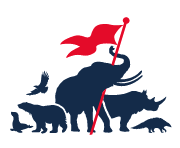Vultures
Vultures, large birds of prey that scavenge on the carcasses of dead animals, are vitally important to our ecosystems, yet widely misunderstood and vilified. They are facing an existential crisis in many parts of the world. Some species, including the hooded, white-headed and bearded vulture, have fewer than 100 breeding pairs left in the wild, making them critically endangered.
Vultures are not only essential “out there” in the wild, but to your everyday wellbeing. Here is why you should care about this critical clean-up crew.
Quick facts
- There are 23 species of vultures globally, almost half of which (11) are found in Africa. The remainder are found in North, Central and South America; Asia, and Europe.
- Vultures are a keystone species, meaning they play a vital role in maintaining the health and balance of their ecosystems.
- As scavengers, vultures feed on decomposing carcasses, and in doing so, maintain a clean and healthy environment by significantly reducing the spread of harmful diseases and pathogens.
- Beyond playing the role of environmental sanitation managers, vultures also keep themselves very clean, bathing on a daily basis.
- Their characteristic bald heads and necks reduce their vulnerability to disease. The lack of feathers and exposure to sunlight prevents harmful bacteria and parasites from lingering after they feed.
- Vultures are dedicated parents, breeding only once a year and rearing only one chick at a time.

Vultures need your help
Vultures are at great risk. Often considered “ugly ducklings” of the conservation world, they don’t get much attention. This, coupled with human threats and their low breeding rates, has resulted in significant, and worrying, population declines.
- Approximately 70% of breeding pairs have disappeared since 2001
- Globally, 14 of the 23 vulture species are considered critically endangered.
What would happen without vultures?
If vultures were to stop existing, so would the essential sanitation services they provide.
- Carrion would be exposed for long periods of time:
- This would increase populations of animals attracted to decomposing matter such as flies, rats and feral dogs, which may all carry and transport harmful diseases.
- Humans would then be directly at risk of increased contact with disease, which may increase our own mortality.
- Water quality is likely to decrease where carcasses are dumped, further enabling the spread of disease.
You may be thinking “surely vultures can’t be that impactful” and this may all seem like a far-fetched gloomy theory, but this exact scenario has already happened in other parts of the world, such as India.
A rapid and significant decline of vulture populations in parts of India in the late 1990s wiped out 95% of the regions’ wild vultures. The decline was due to a veterinary medicine called diclofenac – an anti-inflammatory used to treat mild to moderate pain in humans and animals – which vultures ingested via carrion. Studies have found that human death rates in the region rose by over 4%, water quality diminished, and evidence also points to an increase in feral dog populations and rabies.

Threats to vultures
- Powerline collisions
- Poisoning (intentional or incidental)
- Lead poisoning: Cape vultures, found in southern Africa, and White-backed vultures, found in various parts of Africa, are facing unusually high exposure to lead poisoning.
- Carcass poisoning: Poachers kill great numbers of vultures for “traditional medicine” and for their meat, by intentionally lacing animal carcasses with poison.
- Livestock poisoning: secondary poisoning by drugs administered to livestock
- Declining food availability due to changes in livestock practices, sanitation enhancements at slaughterhouses, and the decline of certain mammal populations.
- Habitat loss
- Poaching: for the traditional medicine trade in Asia and Africa, and for meat
- Retaliatory killings by farmers who believe they prey on live animals, or that they are “pests”
- Human interference with nesting sites
- Drowning in reservoirs, which is not awfully common but happens in parts of southern Africa.
Solutions
- Creating vulture safe zones:
- In a southern African context, a Vulture Safe Zone (VSZ) is an appropriate geographic area in which targeted conservation efforts are undertaken to address the key threats facing vultures in that region.
- Providing safe havens for existing vulture populations
- Encouraging sound environmental practices that could provide landowners with reputational and economic benefits for protecting vultures.
- Tswalu Kalahari Reserve (Northern Cape Province) was declared South Africa’s first Vulture Safe Zone in 2019. Lappet-faced Vultures are known to breed on the reserve, and White-backed Vultures, which breed further north along the Kuruman and Limpopo Rivers, frequently visit the area to bathe and to forage.
- Vulture tagging projects
- Anti-drowning mechanisms: water reservoirs fitted with escape mechanisms for floundering birds
- Better awareness and education among farmers and communities
- Cross border collaboration: One of the biggest challenges facing vulture conservation is the fact that vultures cover enormous distances, often in one day, with no regard for country borders.
- Vultures protected in one region may not benefit from such protection in another. It is therefore vital that cross-border collaboration be promoted, as had been done between Lesotho and South Africa for the benefit of the Bearded Vulture
ASI works with partners specializing in the rescue, rehabilitation and release of vultures. Read about our previous work with vultures and sign up to stay up to date on our latest work with the species.

